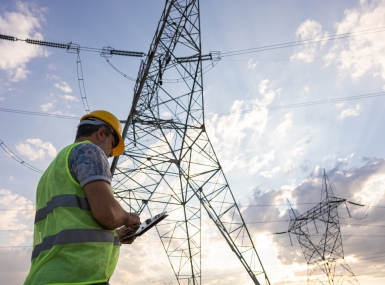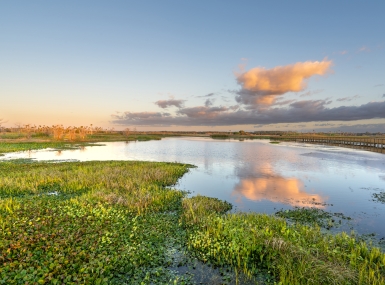Sherburne County and tribal nations collaborate on county park

Key Takeaways
It was a man’s dying wish for his farm to become a county park. The 430-acre property sits on a mile of lakeshore and is home to dozens of wildlife species. The land is also a sacred Native American burial ground.
Sherburne County, Minn. is working with tribal nations to ensure that its creation of Big Elk Lake Regional Park is respectful of the land’s indigenous roots and offers opportunities for Native Americans to reconnect with their ancestral ties.
“We have an opportunity here to really honor what’s there and what’s been there,” said Gina Hugo, Sherburne County Public Works parks director. “And that means letting the tribal partners guide the development of the park.”
Learn more
The county reached out to Minnesota’s 11 tribal nations by letter, email and phone to see if they were interested in providing input for the park. Three tribal nations have continued to be involved throughout the process: The Mille Lacs Band of Ojibwe, Upper Sioux Community and Lower Sioux Indian Community.
“Being able to have these planning discussions about onsite programming and educating the community, that happens through storytelling and knowledge exchange,” said Cheyanne St. John, cultural director and tribal historic preservation officer for Cansa’yapi Cultural Department at Lower Sioux Indian Community. “So, it’s good to see that the county is willing to reach out to our elders, reach out to our experts to share that story.”
The county’s initial vision for the park included a fishing pier, canoe and kayak rentals, a dog park and a camping area with yurts, but after hearing from the tribal partners, the public works department completely changed its plan to respect the sacred nature of the land. Now, the park will instead feature a 5.5-acre foraging forest, where traditional Native American foods and medicines will be planted, and the restoration of native prairie.
“We learned that in an area that is sacred, if it’s not appropriate in a mosque or a church, it’s not appropriate there, so to do like celebratory, fun things in an area that was used historically as a cemetery is very offending to our tribal partners,” Hugo said. “… So, it became more about how to restore the landscape to something that represented a more indigenous worldview.”
The portion of the park that is an indigenous burial ground will not be disclosed to the public, because of the fear of looting and desecration, according to Hugo. Federal land management agencies estimate that more than one-third of Native American sites on federally protected property have been emptied, and it’s estimated that more than 90% of known American Indian archaeological sites have been destroyed or negatively impacted by looting.
“When visitors come to this location, they’re going to know that this is an indigenous landscape, these were the first people,” St John said. “And the idea is to include a little bit of content around what this landscape signified, but we don’t want to identify that this is a cemetery or that this is a ceremonial site. We just want them to know it’s significant, it’s sensitive and to respect it.”
The previous landowner, who raised pheasants on the property, had always wanted the land to be a county park, Hugo said. When he died, the county purchased the 430 acres, which had also previously been used as a dairy and poultry farm, from his heirs. Most of the buildings on the property will be torn down, but the two cottages and the dairy barn will remain and potentially be turned into sites for park programming, as they might be eligible for the National Historic Register of Places, according to Hugo.
The park’s first walking trail loop opened in November and 78 acres of native prairie is being planted this spring. Planting a native prairie typically involves using mechanical and chemical methods, but because of the sacred nature of the land, the park will use more traditional methods of managing the landscape, including the use of prescribed fire.
“Chemical is poison, and that causes cultural conflicts,” Hugo said. “And then mechanical tillage disturbs the soil, and we don’t want to disturb any soil on the landscape, because there are still intact cultural features under the landscape, despite historic tillage.”
The more traditional landscape methods used in the park will make for a slower process; the 40 species of native grasses, sedges, forbes and legumes will be planted over the course of around five years.
“There’s a little saying about native prairie,” Hugo said. “The first year it sleeps, the second year it creeps and the third year it leaps, because it spends like the first and second year really developing a strong root system before it invests any energy in above ground growth.”
Big Elk Lake Regional Park is the ancestral land of the Dakota and Ojibwe nations, and while the tribal nations’ reservations are located outside of the county today, the park will serve as an opportunity for cultural exchange among Native Americans from all walks of life, St. John said.
“There are Indian communities in just about every little town or city,” St. John said. “And I think sometimes, you get removed from your home community, and being able to access those parts of your identity become a challenge, so if this is one of the locations that any indigenous families can utilize to reconnect, I think that’s a good thing.”
The public works department plans to work with partners to host programs on sustainable harvesting and the traditional uses of plants for foods and medicines, including continued collaboration with indigenous students at St. Cloud State University on the foraging forest, so that they can share and practice their cultural traditions and feel connected to their heritage, Hugo said.
“I think there’s been an increasing disconnect for contemporary indigenous people from their culture,” Hugo said. “And this place is going to provide an opportunity to reconnect to ancestral ties.”
Related News

HUD announces new energy standards for affordable housing
HUD announces new energy standards for affordable housing.

U.S. Department of Energy announces $18 million for Local Government Energy Program
U.S. Department of Energy announces $18 million for Local Government Energy Program

U.S. Army Corps of Engineers publishes memo on protection of non-jurisdictional waters and wetlands
U.S. Army Corps of Engineers memo directs civil works actions on water and wetlands in response to recent Waters of the United States (WOTUS) changes.
County News
County turns landfill into community park, concert venue

